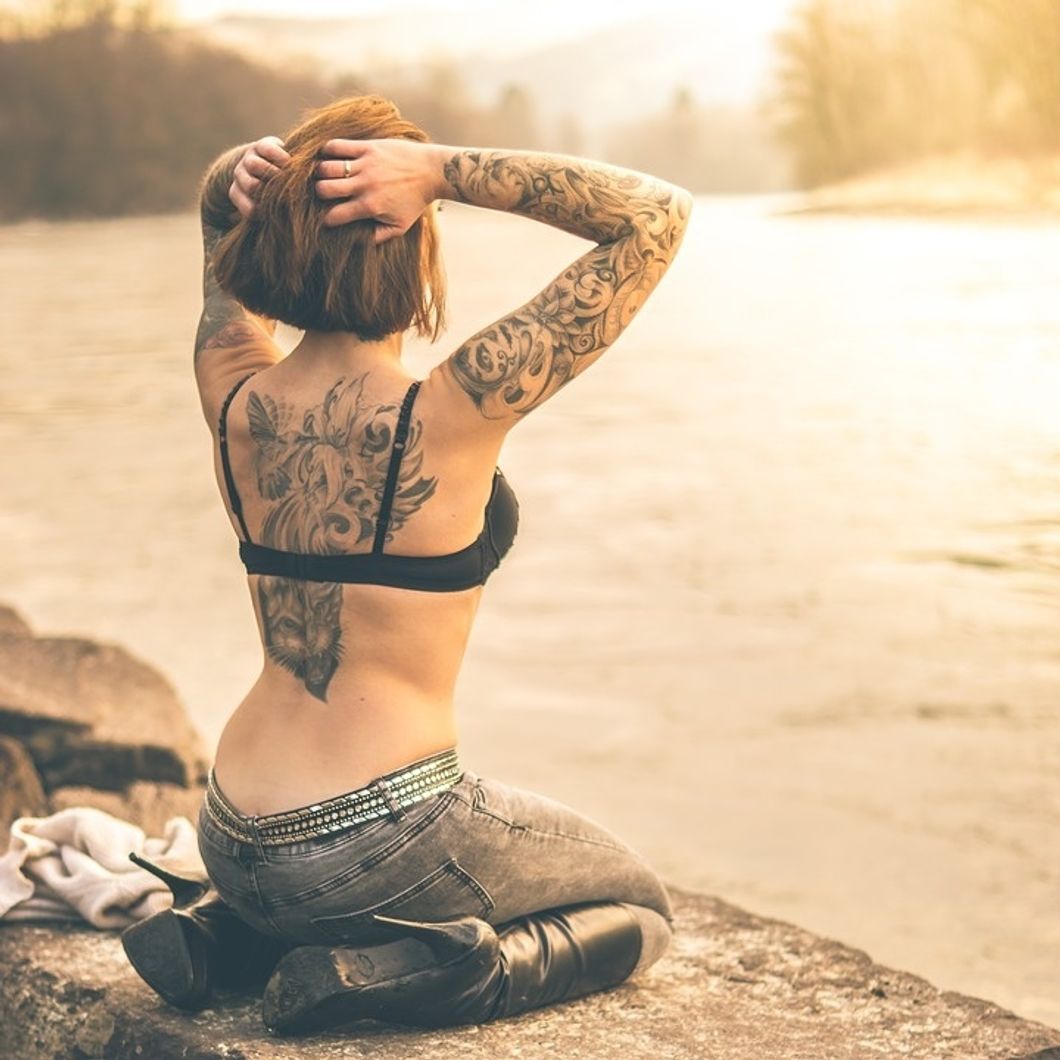Recently, I decided to make a change to an old tattoo. It is from my past and the memory is now bittersweet and as I am growing and changing from the inside out, I knew it was time to make this change as well. I spent a Saturday afternoon at the "Age Of Ink Tattoo and Body Piercing," and the artist, Rafael Carlos, helped me create the design. He was patient and very professional.
He asked all the right questions, that made me feel confident I selected the right artist. He asked me why I wanted the tattoo, how old was the tattoo, have I gotten tattoos since the one I was covering, also asked if I was interested in getting it done that day or just asking for information to make my decision.
In addition, Rafael, https://www.facebook.com/rafael.carlos.50 is an artist and will not put a tattoo on someone's body unless he is sure they understand the responsibility as well as his guarantee that it will be what they ask for. For example, a young woman came into the shop wanting a tattoo on her lip. He refused because he can not guarantee it will heal properly.
However, before you walk into a tattoo parlor there are a few questions you should ask yourself.
1. Will you wake up tomorrow morning and regret it? At my age, that is probably not a problem, but for someone on a specific career path or lifestyle, a visible tattoo probably is a bad choice. Which brings me to the next question.
2. Will your tattoo be easy to cover when needed? We all have those times in our lives when business does not mix with personal choices. And some tattoos cannot be covered no matter how much makeup is used.
3. Does your tattoo have written word, and do you know if they are correct for what you intended? If you plan on putting a tattoo in a different language than you speak make sure you do the research and know the meaning as well as how to speak it.
4. Are you willing to commit to the change on your body? Even though today anything can be removed from the body, make sure you can commit to it or are ready to pay a lot of money if you can't.
5. The most important question is can you endure the pain? Tattoos are painful, they use a hot needle drill that etches into your skin and leaves the ink behind. Depending on the detail of the tattoo, this process can take several hours and sometimes days.
Tattoos were a form of healing used by Ancient Egypt and India. These ancient countries used them for religious status and in the Philippines, tattoos were a status symbol for the wealthy and believed they had magical qualities. However, Christians considered tattooing a barbaric tradition. For decades tattoos were commonly seen on sailors and soldiers as a sign of brotherhood or in some cases a memento of their travels.
Through the ages, there have been a few historical people that adorned a piece of art on their skin. It is no surprise that Janis Joplin had body art, but Lady Randolph Churchill, Winston Churchill's mother had a snake tattoo wrapping around her wrist and Winston had an anchor on his forearm. While George Orwell was in India working with the Imperial Police he got tattooed with a blue dot on each knuckle. Dorothy Parker had was tattooed in New York with a star on her elbow. Thomas Edison had a tattoo of five dots on his forearm, the device used was an invention from Samuel O'Reilly that used an electric pen developed by Edison. Finally, King Harold II had a tattoo over his heart that read "Edith and England," and when he died his wife, Edith, was able to identify him by his tattoo.
Even though tattoos originally were for health or religious reasons, it has changed over the years. Tattoos are a form of art but at times can also be a form of social branding. Men who have tattoos are considered tough and at the same time not ambitious enough to land a corporate job. Women who have tattoos are labeled as easy, and the ever-popular phrase "tramp stamp," gives credence to the term. As our society yearns to be different and many love the fashion or anti-fashion charm of a tattoo. It is self-expression without communication. Maybe the new rebel in the age of tattooing the person that chooses not to get a tattoo.
Personally, I don't like the pain that comes with getting one, and I still worry about the stigma of showing it publicly. However, the present tattoo is in a place that more than likely will never be displayed in public. Maybe the new rebel in the age of tattooing the person that chooses not to get a tattoo.


























